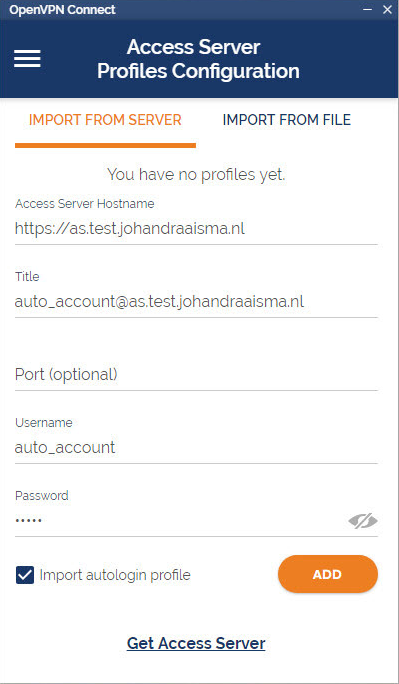
- OPENVPN CONFIG OPTIONS HOW TO
- OPENVPN CONFIG OPTIONS UPGRADE
- OPENVPN CONFIG OPTIONS SOFTWARE
- OPENVPN CONFIG OPTIONS PASSWORD
OPENVPN CONFIG OPTIONS SOFTWARE
5.11 How can I allow software clients to resolve DNS over the tunnel?.5.10 I'm using site-to-site and my software clients can only talk to the main server.5.9 Can I create site-to-site tunnels with non-Untangle devices?.5.8 How can I restrict access to certain OpenVPN users?.5.7 OpenVPN connects, however I can not access anything.
OPENVPN CONFIG OPTIONS PASSWORD
5.6 Is there a way to setup a password for the OpenVPN users?.5.5 Can I use OpenVPN on both of my WAN connections?.5.4 Can I still use OpenVPN if my Untangle does not have a public IP?.5.3 With OpenVPN, can I force all network traffic through the VPN tunnel?.5.2 Can I use it with my phone or tablet?.5.1 What operating systems are supported?.2.4.2.2 Modify Default Configuration Item.2.4.2.1 Exclude Default Configuration Item.2.4.2 Server Configuration and Client Configuration.
OPENVPN CONFIG OPTIONS UPGRADE
The default is BF-CBC, but when cipher negotiation (NCP) is allowed, OpenVPN 2.4 and newer on both client and server side will automatically upgrade to AES-256-GCM. Usage: Define the Cipher Algoritm to use for the encryption of data channel packets. Usage: Specify the message digest algoritm to use to authenticate data channel packets (The default is SHA1 ).Įxample of Command to add on DAL: -auth SHA256 Push DNS: set the DNS addresse to the Client:Įxample of Command to add on DAL: -push "dhcp-option DNS 8.8.8.8" Push Default Gateway: this will configure all clients to redirect their default network gateway through the VPN, causing all IP traffic such as web browsing and # and DNS lookups to go through the VPNĮxample of Command to add on DAL: -push "redirect-gateway def1 bypass-dhcp" Push routes: this allow the client to reach other private subnets behind the server.Įxample of Command to add on DAL: -push "route 192.168.2.0 255.255.255.0“

(Note: the option must be enclosed in double quotes ("") and the client must specify –pull in its config file). Usage: Push commands can be used to push configuration options to the client for remote execution. The second parameter should be '0' on the server and '1' on the clients
OPENVPN CONFIG OPTIONS HOW TO
Where ta.key is the secret file that must be copied into the /etc/config/ path of the DAL router files system (see how to upload files here: Upload and download files).

This can aid in mitigating denial-of-service attempts from unauthenticated clients, as junk traffic can be dropped much sooner.Įxample of Command to add on DAL: -tls-auth /etc/config/ta.key 0 Usage: The tls-auth option adds "extra protection" to the TLS channel by requiring that incoming packets have a valid signature generated using a PSK key (that need to be shared between the peers). This is not usually recommended as it would be OpenVPN that will manage the network and not the device. If the override box is selected, then the config file will consist of only the commands from advanced options section (almost same as using a server config file). If illegal options are given or format is wrong (for example the "-" is missing), the openvpn server will fail to start and in the System > Logs section there will be an error like the following example: This will create a new line in the OpenVPN config is created for every occurrence of ‘-’, for example, inserting -auth SHA256 -push "route 192.168.2.0 255.255.255.0":Īdds the following lines to the server config file: If multiple commands, they must be separated by a space

All openvpn parameters must start with ‘-’ This can be done in the "Advanced Options" section, following the rules below: When setting UP a DAL router as OpenVPN Server, it could be useful to add some extra OpenVPN parameters, that differ from the default ones used by DAL.


 0 kommentar(er)
0 kommentar(er)
